There are many local fruits of Malaysia, and I think I’ve tried them all. But the list of tropical fruits below has super-duper extra-fancy health-powers. I’m convinced these powers are the reason there are so many gorgeous women here. It’s def not their bloodline. It’s all the rare fruits in Malaysia. I’m sure of it. Yup. Really sure.
Curious about these super-fruits of Malaysia?
Let’s get munching…
But first a picture of some beautiful Malaysian women to show you what I’m talking about:
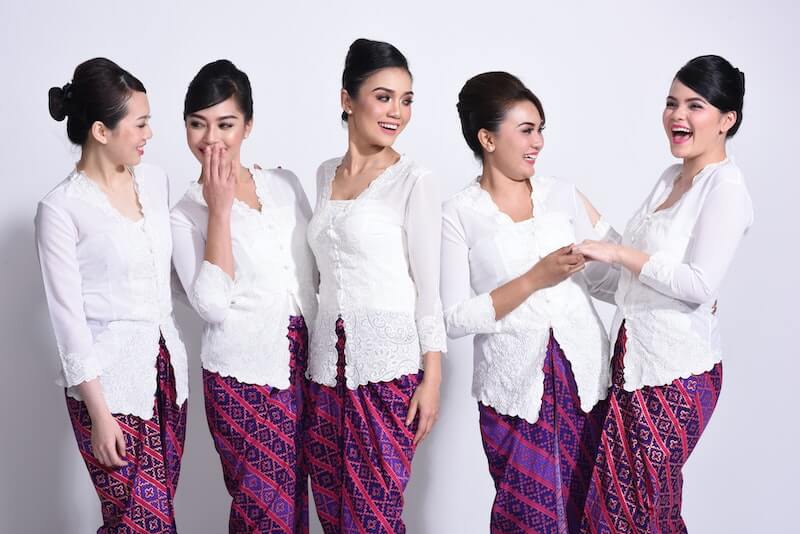
Rambutan
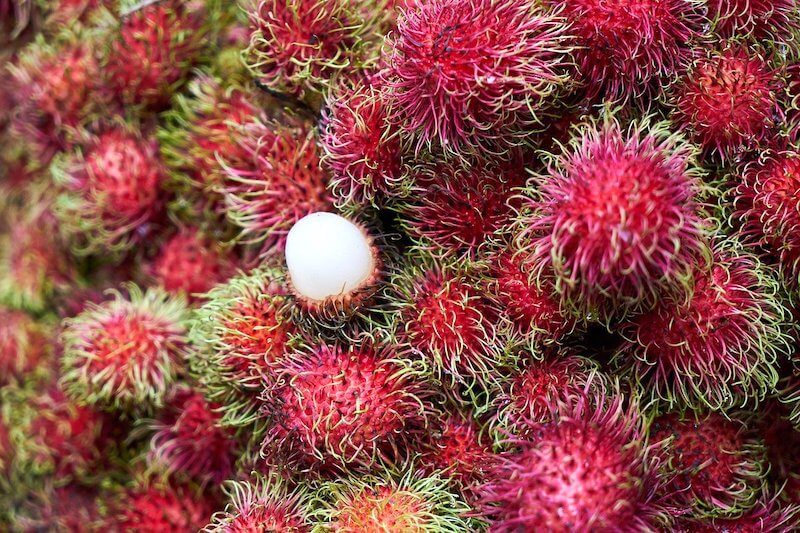
Mark and I refer to these as little hairy balls. Because, well, they are. Rambutans are not the prettiest tropical fruits in Malaysia, that’s for sure.
They are the size of golf balls, and when you tear open the ugly skin, a smooth white flesh appears. As you bite in, they pop in your mouth because they are so juicy.
They have a mellow sweet flavor – not cloyingly sweet like a lychee, its cousin. And they are really refreshing in the heat.
Eating tip:
Don’t chomp down. There is a seed inside. Eat them the day you buy them because they get old and wrinkly fast. And no one likes old, shriveled, hairy balls. No one.
Health benefits:
Loads of juice means hydration for your skin. They are packed with vitamins B, C, calcium, and magnesium. If that wasn’t enough, they also have antioxidant properties and are high in fiber. They are fab for overall health, not just your skin. Rambutans for the win!
Rambutan season in Malaysia:
June to August and in some areas November to January.
Durian: The most controversial fruit of Malaysia
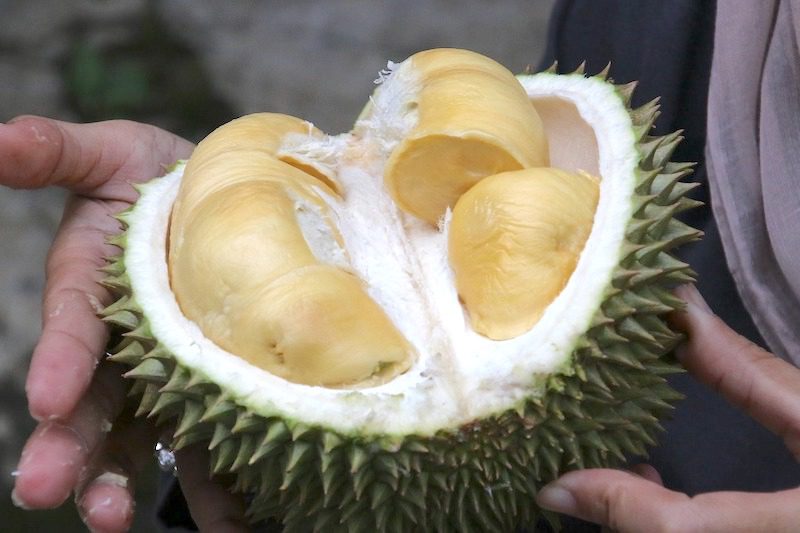
No list of fruits of Malaysia would be complete without the king of fruits, aka durian.
They are the stinky pride of this country.
So stinky that it’s illegal to fly with them or bring them to a hotel.
Their outer skin is so spiky and sharp you need thick gloves to hold them. The durian fruit trees in Malaysia often have nets installed underneath their branches. When the heavy fruit falls, it has a soft landing and doesn’t kill anyone. They smell like rot and are hard to open.
It almost seems like the durian themselves don’t want you to eat them. They certainly don’t make it easy.
I can’t imagine the first guy who smelled a durian and thought, yum, we should eat that. He must have been starving. But I’m very thankful he did.
Is durian an acquired taste? I’d say so. Most people who grow up in a country that has a durian season love it. The rest usually don’t, and I can see why.
It smells like a teenage boy’s laundry basket, dirty gym socks, blue cheese, and onions. And I LOVE THEM!
(Durians, not teenage boys. That’d be gross).
In your head, it’s a fruit which should be sweet and refreshing. Not oniony and custardy. So, your brain goes into a tizzy when you try this squishy yellow lobe that tastes like onions. But if you get past that, it’s heavenly.
There are hundreds of durian types, and they are all totally different in size, shape, appearance, and flavor. The durians in Sabah are bright red and sunset orange instead of a shade of yellow.
My faves aren’t sickly sweet and have some sort of burned caramel taste.

Fun fact:
You’d think from the title King of Fruits that durian is the Malaysian national fruit, but it’s not. It’s papaya. However, durian is so popular that people will pay a ton of money for one. The most expensive durian fruit ever sold was in June of 2019 for 1.5 million Thai baht or $47,784. You can buy a home in Thailand for that kind of money… or a durian.
Health benefits:
They are full of antioxidants which can reduce the appearance of wrinkles and pigmentation. It may help you sleep better because, like turkey, it has tryptophan, a precursor to melatonin.
It also has more Vitamin C than most tropical fruits.
Durian season in Malaysia:
It really depends on where you are because it’s different all over the country. But in most areas, you can find it from June to August and possibly November to January.
Jackfruit: My fave fruit of Malaysia
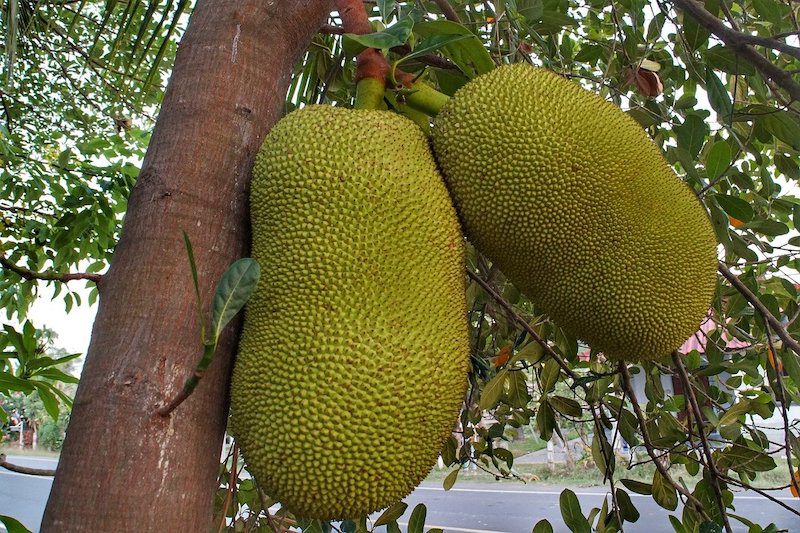
Jackfruit can grow to the size of a small car. Seriously. Well almost. The largest one weighed in at 95 pounds. That’s literally the size of my mom. No joke.
I know in recent years, there has been a jackfruit craze going on in the US, and people are using it as a meat substitute. The texture could be similar to pulled pork or chicken, so it makes sense. Here we just eat it au natural or in a curry, but not as a substitute for meat. And it’s damn tasty.
This Malaysian fruit is usually a bright green oblong shape with tiny spikes. Not deadly ones like durian, just spikey enough to know they could hurt.
Inside are golden nuggets of yummy goodness. They smell a little like a banana but taste a little like a mango mixed with bananas and honey and are pretty sweet.
The seeds are edible if boiled.
Health benefits
It’s a fruit, a faux-meat, and a protein-packed snack. What more could you ask for in a fruit? Well, let me tell you… it has Vitamin A, C, riboflavin, magnesium, potassium, copper, and manganese. It packs a healthy punch.
Jackfruit season:
If you love jackfruit, you are in luck because they are available all year round. This is also good for the dusky leaf eater monkeys because they looooove jackfruit.
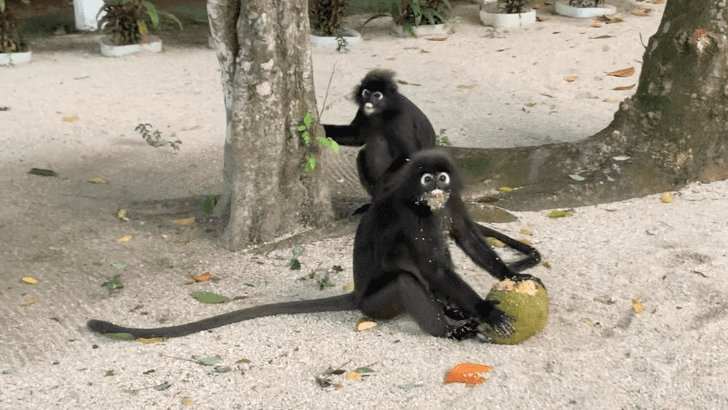
Cempedak
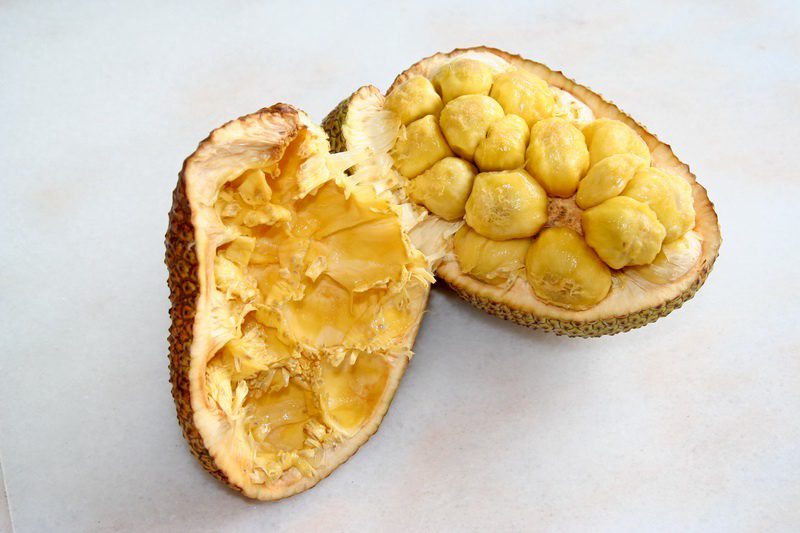
When we first moved here, I was at the supermarket, and I smelled gas, like a gas leak. I went up to one of the employees and told him there might be a gas leak and took him to where the smell was coming from. He looked at me like I was crazy and walked away.
I stood there smelling the produce, looking like the crazy lady he thought I was when I realized it wasn’t a gas leak. That funk was coming from the cempedak fruit.
The golden yellow segments can be a little fibrous, kind of slippery, and sweet. But I still think the gas leak flavor comes through at the end. I realize I’m not selling it here, but it’s the truth. Clearly, it’s not my fave on Malaysia’s tropical fruit list.
It’s ok when it’s fresh, but it’s another story when they deep fry it. It’s gooey and crispy and divine, but then again, what isn’t when deep-fried?
Some of the segments have large seeds which can be roasted and eaten as well.
Heath benefits:
It’s loaded with vitamins A and C. It also has antifungal and antibacterial properties. The Iban people of Sarawak use its leaves medicinally to prevent infection and heal minor skin wounds.
Cempedak season in Malaysia:
The primary season is May to July, but it can also be found at the end of the year.
Pomelo
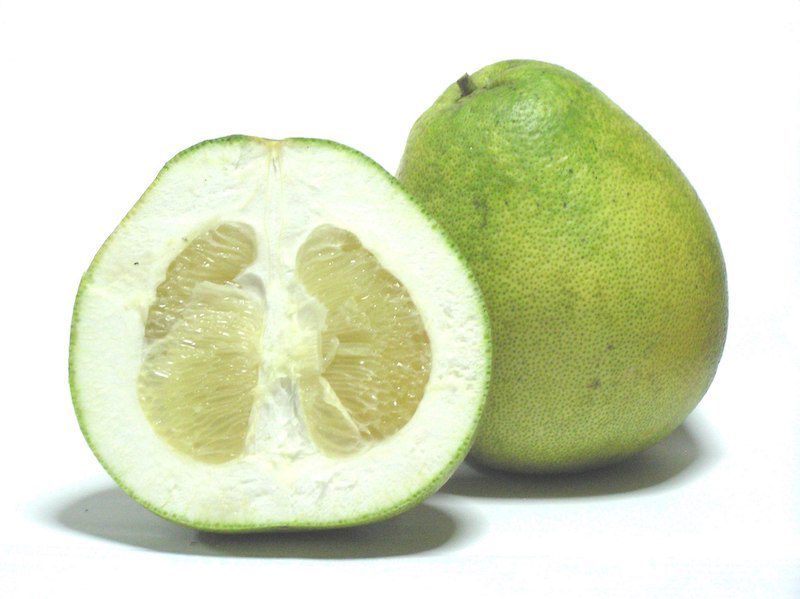
The closest thing we get to grapefruit in Malaysia is a pomelo. It’s in the same family and is also light green, but it’s even bigger and tear dropped shaped. The fruit isn’t as sour as a grapefruit, but it’s just as juicy.
It has super thick skin, about one inch thick, and the inside has large pale yellow segments.
Pomelos aren’t a popular local fruit just because of their taste. They are thought of as a sign of prosperity and good fortune and are especially sought out during Chinese New Year in February. They are very popular in Ipoh. You can see stalls of them by the side of the road all over town.

Health benefits:
One whole pomelo has 400% of the daily value of vitamin C. 400! It also has fiber, potassium, and antioxidants which help fight free radicals in your body.
Pomelo season:
August to October and January to March.
Mangosteen
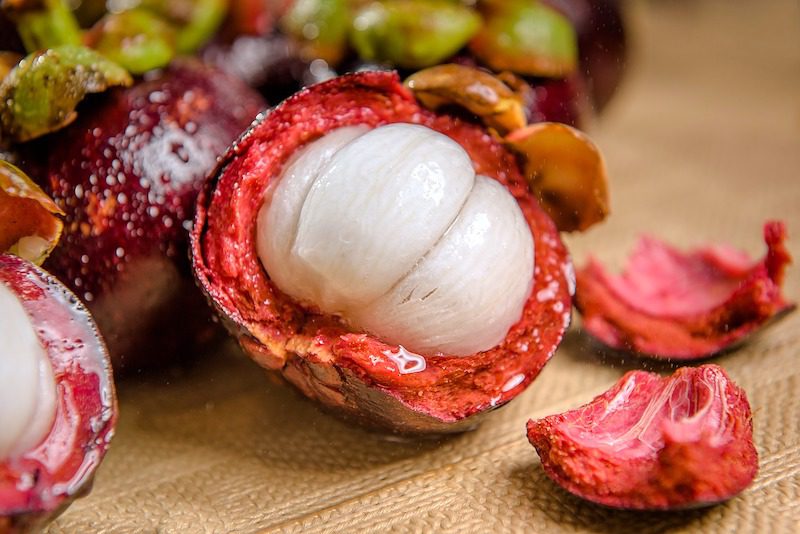
We love these little hard to open local fruits, also known as the Queen of Fruits.
Yes, Malaysia grows the King and Queen of fruits.
Like beets, mangosteens stain everything blood red – they are banned in most hotels in Malaysia.
They have a tough, thick brownish-red skin that I haven’t quite mastered opening. Certainly not like in the picture.
But once I squish it open, 4-5 little white segments appear. Some of the pieces have small pits. It’s not juicy like a rambutan, but soft and sweet and every once in a while, a little sour. They are absolutely gorgeous to eat but do it over the sink because the skin gets messy.
Random fun fact:
Queen Victoria dubbed mangosteens the Queen of Fruit in the late 18th century. They spoiled so quickly, she knighted anyone who could bring them to her fresh.
Health benefits:
They are high in antioxidants and immune-boosting vitamin C. It also has anti-inflammatory elements.
Mangosteen season:
June to August and December to January
Snake fruit
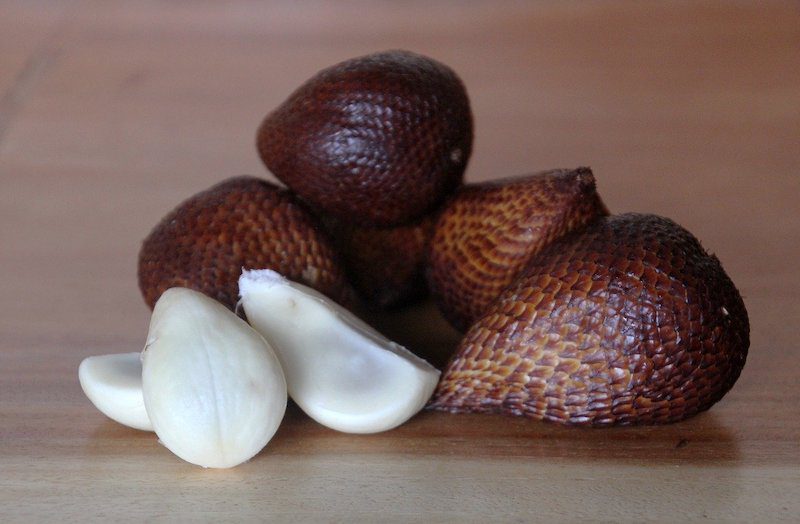
This is another weird-looking fruit.
It kind of looks like a large fig. They are conical and covered in strange brownish snake scales. When you break it open, there is a crunchy white fruit with a seed inside. It’s juicy, kind of citrusy, and tastes like a banana-pineapple smoothie.
We don’t get it that often in Penang.
Health benefits:
In Indonesia, it’s called the fruit of memory because it’s very rich in potassium and pectin – both brain nutrients. It’s also full of iron, calcium, thiamine, and vitamin c. In other words, it’s good for the brain and body.
Snake fruit season:
July to September and from December to January.
Rose Apple: The most meh fruit in Malaysia
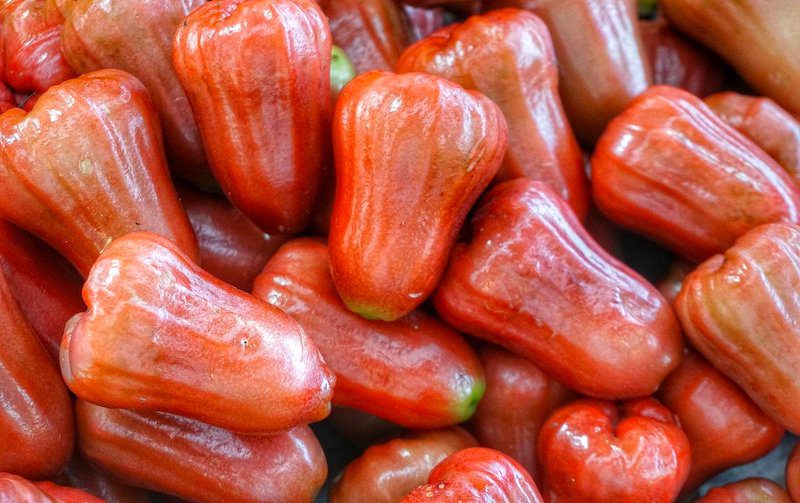
Also known as a Malaysian Apple or wax apple, this pear-shaped rose apple isn’t the most flavorful Malaysian fruit. It’s not as hard as a regular apple but has the crunch. It’s kind of a watered-down version of a peary-apple if that makes sense. It’s has a barely perceptible sweetness. So, it’s a lot like eating a bland apple.
Health benefits:
It’s loaded with vitamins A and C. Supposedly, they help prevent diabetes, but I don’t believe it. Either the locals don’t eat them enough, or it’s bunk. Malaysia has one of the highest levels of diabetes in Southeast Asia.
Rose apple season:
March to May and August to November.

The Last Bite of Fruit
One thing I’ve learned about these exotic fruits in Malaysia is that they aren’t all refreshing and juicy like I thought fruit should be. Sure, you can find watermelon, oranges, mangos here easily too. But a lot of Malaysian fruits are the opposite. They are rich, creamy, and kinda strange. But oh so good once you can wrap your mind around them and their funk.
There are so many local fruits in Malaysia. This is the tip of the fruit-flavored iceberg, or better yet, popsicle. But I wasn’t sure anyone would read another 2000 words on fruit. Hell! I don’t know if anyone is going to read these 2000 words on fruit.
If you want more or other food posts, let me know.
Have you tried any of these? Love em? Hate em? Let me know in the comments below.
Want to save this pin for later? Go ahead – Pin It
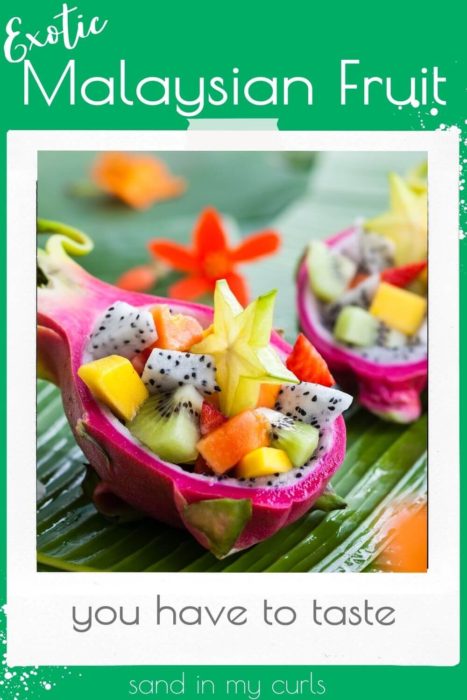
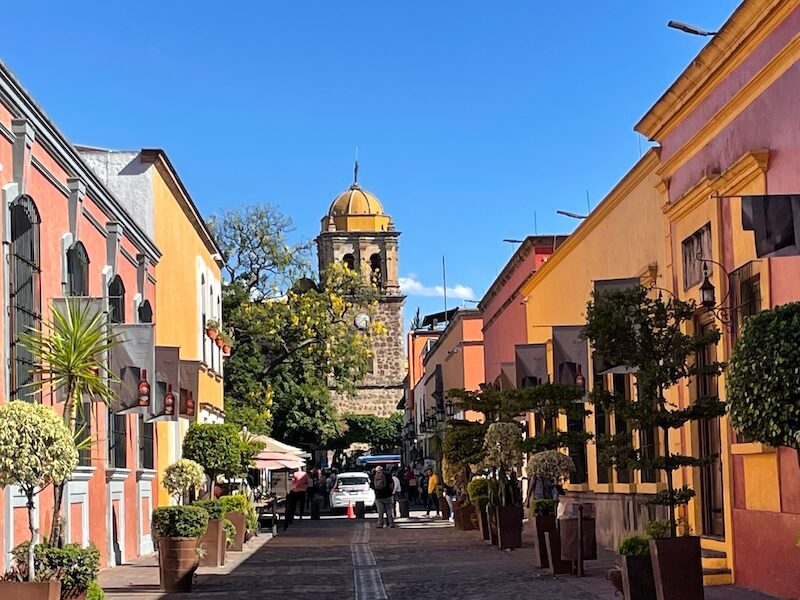
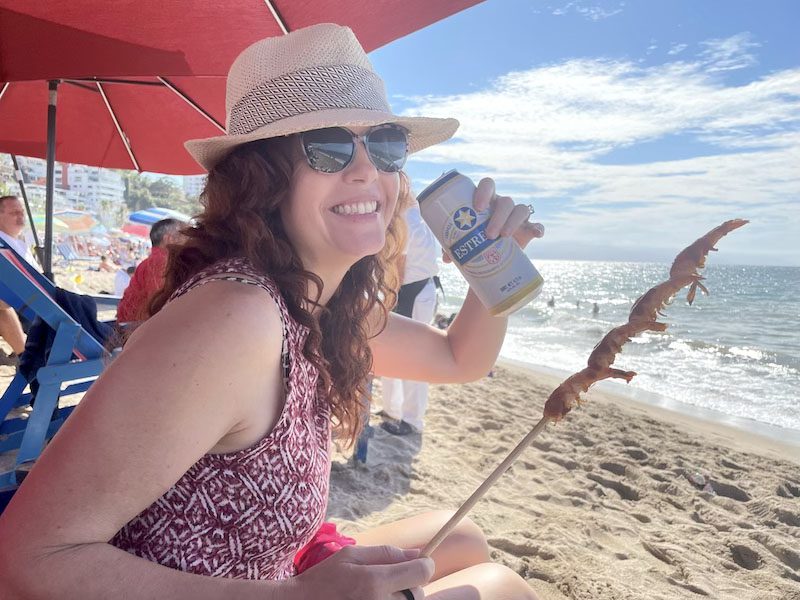
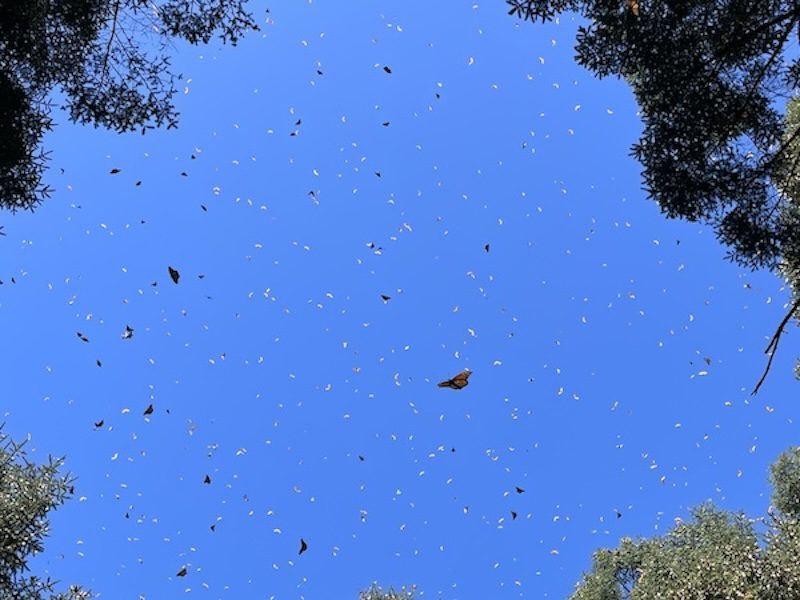
Thank you Kirsten. Any Guava, Longan, Lychee & Sugar apple/custard apple in Penang?
Hugs,
Sandy
Hi Sandy, Thanks! You won’t be denied your fruity loves in Penang… we have all those fruits as well.
Gosh, you know your Malaysian fruits so well!
And you figured out the secret health benefits too!
Most of all, your sense of humour made me lol
Hi Bobby, So happy to make you laugh. We all need that these days!
Awesome list!! Jackfruit and mangosteen are personal faves. I can do durian in a controlled environment. I.e, if my dad does the dirty, stinky work! Some of my other faves not listed are lanzones and marang. I guess you can only find those in the Philippines.
Hi Melanie,
Oooh the first time I tried durian was in Davao. It was very different tasting than the ones here. Much sweeter. We do have lanzones here. We call them langsat.
Still can’t believe you eat durian!😳🤣🤣🤣🤮 We have jackfruit, guava, & ambra growing in our backyard now!! 🤗 love all of your fruits & your writing!😍
Hi Sally! I love that you have a garden with all those yummies. I’ve never had ambra. Is it like sour plum?